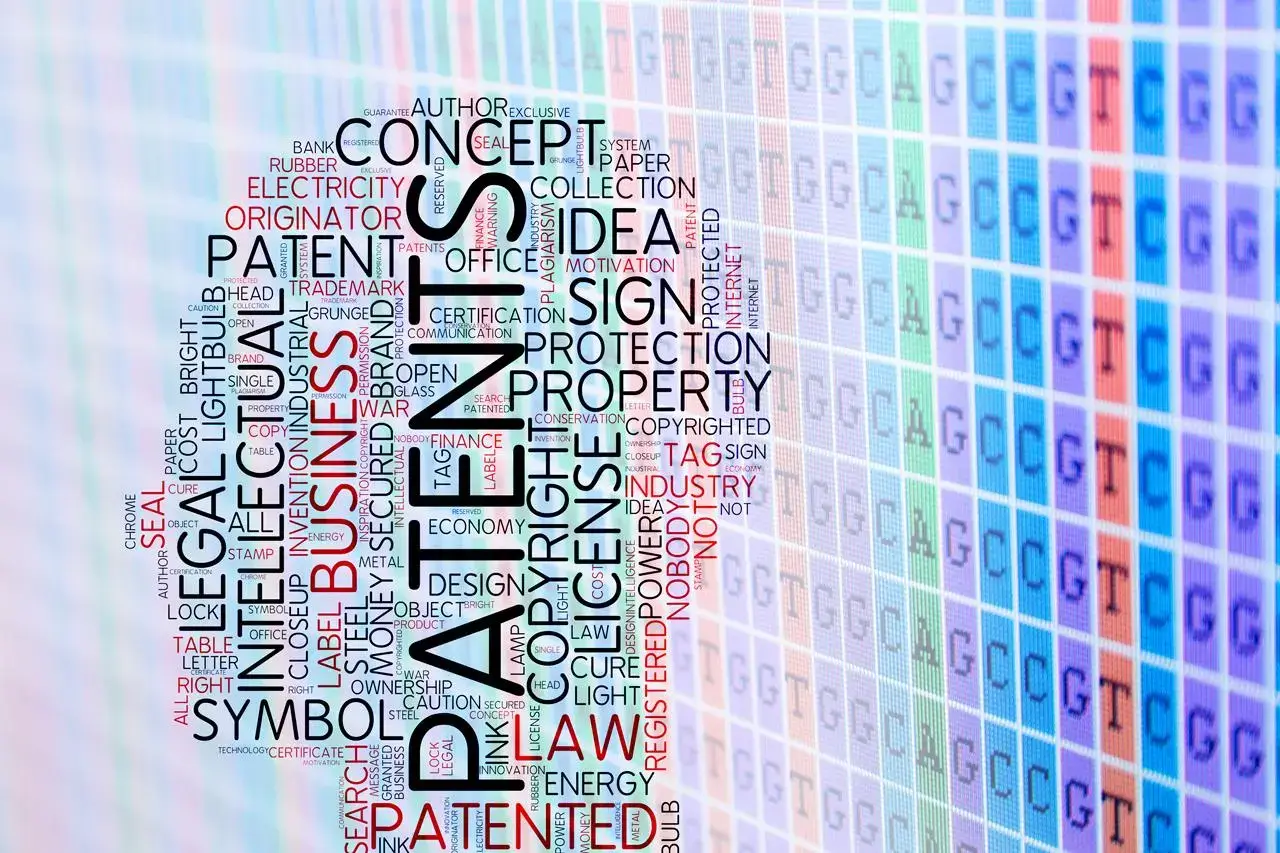Looking for something?
Innovation, Versatile Gene Editing Technologies, and Patent Battles

Last June, at a genome editing summit in Lisbon, following a much-anticipated presentation by Tessera Therapeutics about their new gene editing technology, an audience member asked a question that is now the basis of a patent dispute: how was it different from the prime editing technology created by Harvard and Broad Institute biochemist David Liu?
Gene editing has become one of the most game-changing scientific technologies of the 21st century. The ability to precisely modify genes in living organisms offers a vast array of potential applications in medicine, agriculture, and industry. However, accompanying the rapid development of gene-editing technologies is a growing number of patent legal disputes.
2012 to 2022: the ongoing CRISPR patent dispute
In 2012, Jennifer Doudna of the University of California Berkley, and Emmanuelle Charpentier of the Max Planck Institute, first demonstrated the potential of CRISPR-Cas9 for genome editing. However, in 2014, Feng Zhang and his colleagues at the Broad Institute of Harvard and MIT, known collectively as Broad, claimed they were the first to get CRISPR to work in the cells of organisms like yeast, plants, animals, and people — an essential step in applying the technology to human medicines and agriculture.
In March 2022, the U.S. Patent and Trademark Office (USPTO) ruled in Broad’s favor. The decision was based on the fact that the Broad Institute had been the first to demonstrate the practical application of the technology in eukaryotic cells, while the University of California’s demonstration was limited to prokaryotic cells. The University of California appealed the decision in April 2022, which is still pending.
Prime editing versus gene writing: the next big patent battle?
While the first patent battle was waged by two academic rivals, both insisting they were the first to invent the technology, a new dispute has begun that’s shaping up to be a legal quarrel among a mass of companies and labs.
Back at the Lisbon gene editing summit, Michael Holmes, Tessera’s chief scientist, thanked the audience member for “asking about the elephant in the room.” He agreed the technologies were similar but had “distinct” differences. Unexpectedly, he implied that Tessera might have developed the technology first, as they had filed a 2018 patent predating prime editing.
The mechanics of prime editing
Although CRISPR-Cas9 was a breakthrough technology, it was also limited in what it could do to a genome. However, in 2016 and 2019, Liu’s lab came up with base editing and prime editing, broadening the capabilities of the gene-editing field and erasing several limitations of CRISPR (1).
According to a 2021 article published in Gene Therapy, traditional gene editing strategies used for specific changes to the genome sequence rely on the common step of cutting the DNA at a specific location. Although necessary, these breaks can be difficult for the cell to repair, leaving it vulnerable to errors. However, base editing and prime editing allow for more precise changes to DNA without cutting it.
Base editing allows certain individual DNA bases to be changed; specifically, it can substitute purine bases for other purine bases or pyrimidines for pyrimidines. Prime editing, created by one of Liu’s postdocs, Andrew Anzalone, has a broader scope, with the capability to change any letter into any other letter.
Prime editing accomplishes this by using a guide RNA to direct a prime editing complex to a specific location within the DNA. This complex contains a modified Cas9 protein, called a “prime editor,” fused to a reverse transcriptase enzyme (2). The prime editor is designed to recognize a specific DNA sequence and cut one strand of the double helix, allowing the reverse transcriptase to use the uncut strand as a template to add or delete specific nucleotides at the cut site.
The prime editor contains an engineered RNA template designed to hybridize with the uncut DNA strand at the target site. The reverse transcriptase then uses this template to copy the desired sequence changes into the DNA strand. The result is a highly precise modification of the DNA sequence without the need for double-stranded DNA breaks.
“Prime editing substantially expands the scope and capabilities of genome editing, and in principle could correct up to 89% of known genetic variants associated with human diseases,” the 2019 publication by Anzalone et al. states (2).
The mechanics of gene writing
Meanwhile, Tessera Therapeutics, part of Flagship Pioneering, continued stealthily working on another idea: using mobile genetic elements, or MGEs, to change genomes.
Described as “amazing genetic parasites,” MGEs are DNA sequences that can recognize, cut, copy, and paste into genomes.
Jacob Rubens and Geoffrey von Maltzahn, Tessera Therapeutics co-founders, focused on a type of MGE called retrotransposons. The method uses four key steps: binding RNA, binding DNA, nicking DNA, and then priming reverse transcription. Using target-primed reverse transcription, a piece of exposed DNA triggers a reverse transcriptase to begin writing. In theory, this could allow researchers to switch any individual base pair for another, explained von Maltzahn.
Similar to prime editing, “Tessera’s rewriting technology involves fashioning a molecular machine out of a protein, such as Cas9, that binds to and nicks open a stretch of DNA; a strand of RNA that provides a template for the DNA you want to write; and a reverse transcriptase that can turn the RNA into DNA.”
In August 2018, the company filed a patent for their gene writing technology and when Tessera finally made its official debut in July 2020, it claimed to have designed a new category of genome engineering technology.
“The potential is to cure nearly any genetic disease, reduce the risk of common disease, and do this broadly and efficiently across patient populations not only in the U.S. and Europe but around the world,” Mike Severino, CEO of Tessera, said.
The same technology with a different name?
Not long after Tessera revealed its technology, Liu began getting calls from investors saying the Tessera writing technology looked strangely similar to prime editing. Liu has stated that the lack of specifics — Tessera rarely publishes or shares details of its technology — makes it difficult to know what Tessera is doing. However, based on their presentations, he says it looks like they’ve changed the name of prime editing to gene writing.
“I welcome and encourage other scientists to use technologies our lab develops,” Liu said. “That said, recognizing and appropriately attributing the discoveries of scientists — especially young scientists such as students in academic labs — is an important part of the scientific enterprise.” Liu also has a significant stake in Prime Medicine, a company founded by himself and Anzalone and which uses their prime editing technology.
Gene editing experts have agreed that Tessera’s technology resembles prime editing. However, they note that there may be important scientific and intellectual property differences, though this cannot be confirmed without Tessera publishing details of its design.
While Tessera argues that its 2018 patent application is a “flag in the sand” that they came up with the technology first, the application was rejected in October 2022. However, this is typical for patents in new scientific fields, and Tessera is reviewing the case with U.S. patent officials.
Still, other gene-editing experts who have reviewed the patent application state that it focuses on using MGEs to insert large genes at specific genome sites, and there’s insufficient information on how to use the system Tessera is calling gene writing. But in March 2020, after Liu’s paper was published, Tessera filed a second patent that does include this information.
In September 2022, Liu’s company Prime Medicine was awarded a U.S. patent for prime editing. Legally, if Tessera and other companies can find different enough components and arrangements than the initial patent for prime editing, they could receive their own patent.
Startups like Arbor Biotechnologies and Metagenomi have created editors they claim are improvements to Liu’s prime editing system, allowing them to bypass the patent. Tome Biosciences, another startup, was given a U.S. patent in 2023 for their PASTE technology, which uses the main components of prime editing and tacks on a DNA-inserting enzyme known as integrase to accomplish larger edits.
What makes the Tessera case contentious and complex is its claim that it independently invented a technology so similar to prime editing.
Are patent disputes stifling innovation?
Gene editing has the potential to revolutionize medicine by allowing for the precise modification of genes that cause diseases. However, the development and commercialization of gene editing technologies are heavily reliant on the ability to secure patents that cover these technologies.
The Tessera Therapeutics dispute is just the latest in a series of patent battles that have emerged in the gene editing field in recent years. In addition to the CRISPR patent disputes, other companies and institutions have filed patents for gene editing technologies such as TALEN and zinc finger nucleases.
The legal battles over gene editing patents have also raised broader questions about the role of intellectual property in scientific innovation. Some critics argue that the current patent system can stifle innovation by allowing companies and institutions to hold exclusive rights to technologies that could have broad public benefits.
Despite these concerns, the patent battles will likely continue as companies and institutions seek to gain a competitive advantage in the rapidly growing gene editing market, with the outcome of each dispute potentially shaping the future of the industry.
References:
(1). Scholefield J, Harrison PT. Prime editing – an update on the field. Gene Ther. 2021 Aug;28(7-8):396-401. doi: 10.1038/s41434-021-00263-9. Epub 2021 May 24. PMID: 34031549; PMCID: PMC8376635.
(2) Anzalone AV, Randolph PB, Davis JR, Sousa AA, Koblan LW, Levy JM, Chen PJ, Wilson C, Newby GA, Raguram A, Liu DR. Search-and-replace genome editing without double-strand breaks or donor DNA. Nature. 2019 Dec;576(7785):149-157. doi: 10.1038/s41586-019-1711-4. Epub 2019 Oct 21. PMID: 31634902; PMCID: PMC6907074.
“The views, opinions, findings, and conclusions or recommendations expressed in these articles and highlights are strictly those of the author(s) and do not necessarily reflect the views of the Oligonucleotide Therapeutics Society (OTS). OTS takes no responsibility for any errors or omissions in, or for the correctness of, the information contained in these articles. The content of these articles is for the sole purpose of being informative. The content is not and should not be used or relied upon as medical, legal, financial, or other advice. Nothing contained on OTS websites or published articles/highlights is intended by OTS or its employees, affiliates, or information providers to be instructional for medical diagnosis or treatment. It should not be used in place of a visit, call, consultation, or the advice of your physician or other qualified health care provider. Always seek the advice of your physician or qualified health care provider promptly if you have any healthcare-related questions. You should never disregard medical advice or delay in seeking it because of something you have read on OTS or an affiliated site.”








